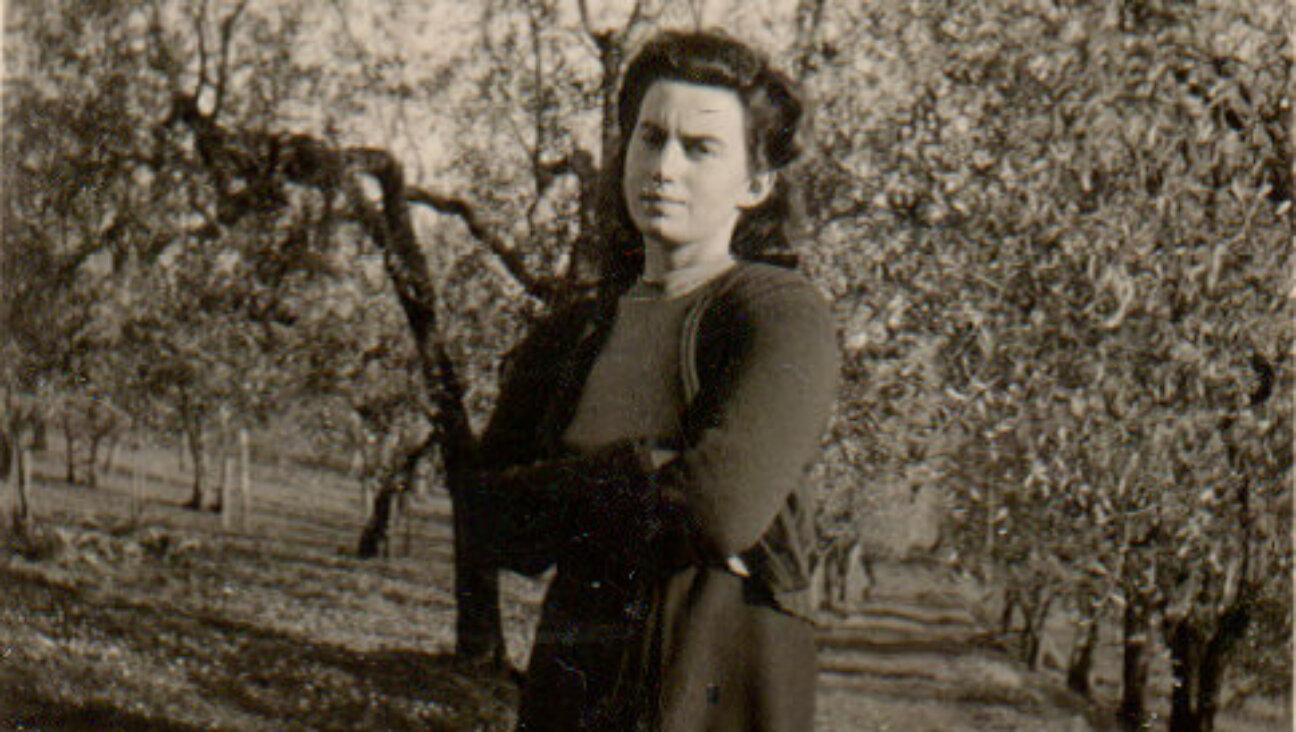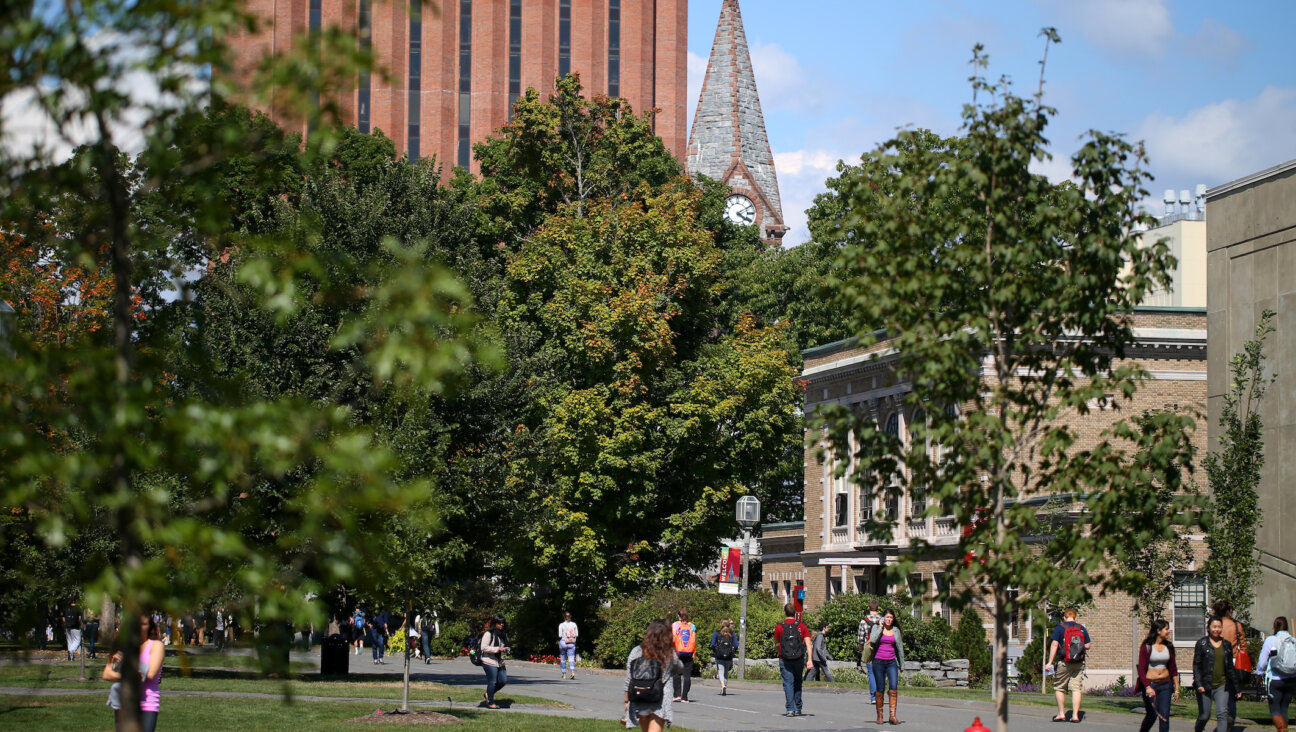Models Open Door for Gaucher Cure
A team of scientists at the Weizmann Institute of Science in Rehovot, Israel, recently solved the three-dimensional structure of glucocerebrosidase, the enzyme whose deficiency causes Gaucher disease.
As a result of this development, new therapies for Gaucher patients may become available soon. The development was reported in July in Biotech Week.
“This now gives us an opportunity to think about making better enzymes and reactivate the defective enzyme,” said Tony Futerman, a scientist in the biological chemistry department at the Weizmann Institute who was part of the team that solved the model.
In patients with Gaucher disease, the most prevalent genetic disease among Ashkenazi Jews, a genetic mutation causes a defect in the body’s production of the enzyme glucocerebrosidase, preventing the body from metabolizing a certain fatty substance. Patients with this disease experience swelling of the spleen and liver, often have severe bone problems and have insufficient blood flow to vital organs. Rare forms of the disease are characterized by neurological damage. Enzyme replacement therapy, which was developed in 1980, allows patients to enjoy more productive lives, experiencing fewer complications.
Cerezyme, the current enzyme replacement therapy, has some disadvantages. The therapy is an intravenous treatment that patients receive every two weeks for about three hours each time. Cerezyme is also costly — about $100,000 to $300,000 annually — too costly for many patients and their insurers.
Futerman, professor Joel Sussman of the institute’s structural biology department, professor Israel Silman of the neurobiology department, research scientists Michal Harel and Lilly Toker, and graduate student Hay Dvir comprised the interdisciplinary team that solved the three-dimensional model. Laboratories all over the world have been trying to figure it out for almost a decade.
The model was solved by crystallizing the enzyme and doing atomic analysis of it. It took two to three years to find crystals good enough to work out the structure of the enzyme, the scientists said. The team was able to finalize its data and come up with the structure of this enzyme in early April. Futerman said the development will “pave the way” for developing more effective enzymes to treat Gaucher disease.
“It’s very exciting because you can develop literally a limitless number of chemical compounds that can boost the activity of the defective enzyme and thereby cure the underlying disease,” said Dr. Pram Mistry, geneticist at the National Gaucher Center at Yale University.
Scientists hope the model will allow them to come up with a small molecule to treat the disease that will make the therapy cheaper and more effective.
One such therapy is available in Europe and Israel now — Zavesca, also known by its chemical name, OGT918, a pill that is given to patients who cannot tolerate the infusion of Cerezyme. According to some reports, it is not as effective as the intravenous treatment and it has some side effects.
Doctors, however, are looking forward to its introduction here.
“A medical field dominated by one company and therapy is not good. The fact is there needs to be competition between different companies and different therapeutic avenues for the benefit of the patient,” Futerman said.
Another possibility for patients in the future is to engineer an enzyme that will require less frequent administration than the bimonthly Cerezyme therapy. Mistry suggested that by engineering the protein backbone of the model an enzyme can be developed that is more efficient, making enzyme shots necessary only once every six months.
Curing the disease is a distant goal — one that might come from “gene replacement or gene repair,” said Dr. Ernest Beutler, a hematologist at Scripps Research Institute in San Diego who develops small molecules that boost the activity of glucocerebrosidase.
Scientists from the Weizmann Institute are also working on developing small molecules to increase enzyme activity like the molecules of Beutler and his colleagues. The new developments, according to Futerman, are “opening doors” for patients with Gaucher disease.
The Forward is free to read, but it isn’t free to produce

I hope you appreciated this article. Before you go, I’d like to ask you to please support the Forward.
Now more than ever, American Jews need independent news they can trust, with reporting driven by truth, not ideology. We serve you, not any ideological agenda.
At a time when other newsrooms are closing or cutting back, the Forward has removed its paywall and invested additional resources to report on the ground from Israel and around the U.S. on the impact of the war, rising antisemitism and polarized discourse.
This is a great time to support independent Jewish journalism you rely on. Make a gift today!
— Rachel Fishman Feddersen, Publisher and CEO
Support our mission to tell the Jewish story fully and fairly.
Most Popular
- 1

Fast Forward Ye debuts ‘Heil Hitler’ music video that includes a sample of a Hitler speech
- 2

Opinion It looks like Israel totally underestimated Trump
- 3

Culture Cardinals are Catholic, not Jewish — so why do they all wear yarmulkes?
- 4

Fast Forward Student suspended for ‘F— the Jews’ video defends himself on antisemitic podcast
In Case You Missed It
-

Culture How one Jewish woman fought the Nazis — and helped found a new Italian republic
-

Opinion It looks like Israel totally underestimated Trump
-

Fast Forward Betar ‘almost exclusively triggered’ former student’s detention, judge says
-

Fast Forward ‘Honey, he’s had enough of you’: Trump’s Middle East moves increasingly appear to sideline Israel
-
Shop the Forward Store
100% of profits support our journalism
Republish This Story
Please read before republishing
We’re happy to make this story available to republish for free, unless it originated with JTA, Haaretz or another publication (as indicated on the article) and as long as you follow our guidelines.
You must comply with the following:
- Credit the Forward
- Retain our pixel
- Preserve our canonical link in Google search
- Add a noindex tag in Google search
See our full guidelines for more information, and this guide for detail about canonical URLs.
To republish, copy the HTML by clicking on the yellow button to the right; it includes our tracking pixel, all paragraph styles and hyperlinks, the author byline and credit to the Forward. It does not include images; to avoid copyright violations, you must add them manually, following our guidelines. Please email us at [email protected], subject line “republish,” with any questions or to let us know what stories you’re picking up.














